© ROOT-NATION.com - Use of content is permitted with a backlink.
The AGM-154 JSOW is a precision-guided glide bomb used in modern military operations. Ukraine is set to receive these bombs for its F-16 fighter jets. While discussions around long-range weaponry for the F-16 have often centered on the AGM-158 JASSM cruise missile, Western sources have reported that the new $375 million aid package from the U.S. will include AGM-154 JSOW glide bombs from Raytheon.
Today, let’s take a closer look at the powerful weapon that is the AGM-154 JSOW. We’ll break it all down step by step.
Read also: Laser Weapons: History, Development, Potential, and Prospects
What is interesting about AGM-154 JSOW
The AGM-154 JSOW is a high-precision glide bomb frequently used in modern air force operations. Its development is the result of collaboration between the U.S. Navy and Air Force, and it was specifically designed to strike a wide range of targets from a safe distance using aircraft. The AGM-154 JSOW is highly effective and precise, thanks to the incorporation of advanced technologies and innovative features. These technologies allow for accurate strikes while reducing the risk to the aircraft or platform launching the AGM-154 JSOW. Its ability to hit targets without entering heavily defended areas showcases its effectiveness in 21st-century warfare, which is marked by increasing complexity and ingenuity.

The AGM-154 JSOW is manufactured by the renowned Raytheon Technologies Corporation (RTX) in close cooperation with the Pentagon. This glide bomb uses an advanced guidance system to achieve precise target acquisition and engagement. It integrates a combination of GPS navigation, inertial guidance, and infrared homing, which enables it to accurately strike both stationary and moving targets. This sophisticated guidance system ensures highly accurate strikes, effectively minimizing collateral damage and significantly increasing mission success rates.
The bomb exhibits remarkable capabilities, with an operational range of over 130 km when launched from high altitudes. It can hit targets deep within enemy territory while keeping the aircraft safe, striking critical objectives from a distance and avoiding enemy air defenses. Notably, the AGM-154 JSOW is designed to perform flawlessly even in adverse weather conditions and low visibility. This allows the bomb to maintain its effectiveness and reliability in challenging environments, highlighting its exceptional adaptability for deployment in various mission scenarios.
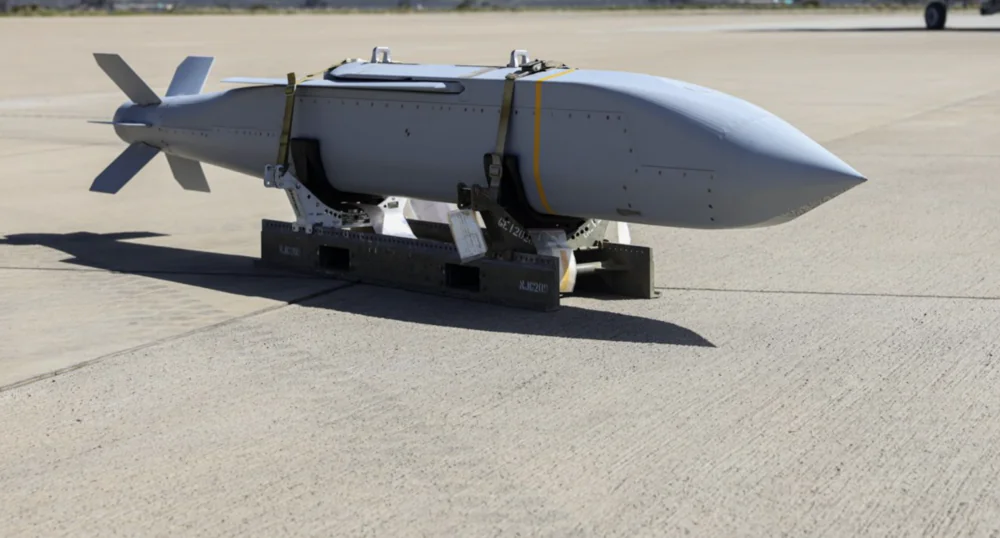
Moreover, the AGM-154 JSOW can seamlessly integrate into network-centric operations, facilitating coordination with allied forces. This integration enhances overall situational awareness and ensures effective mission planning and execution. From a cost-efficiency perspective, the AGM-154 JSOW offers clear advantages over other air-launched weapons. With a unit price ranging from $200,000 to $800,000, depending on the type/version, its modular design and payload adaptability reduce the need for multiple weapons systems, potentially lowering costs associated with procurement, maintenance, and logistics.
The AGM-154 Joint Standoff Weapon (JSOW) is part of a family of low-cost air-to-ground glide bombs produced by Raytheon. Initially developed for the U.S. armed forces, it is also used by the military of Australia, Finland, Greece, Poland, Singapore, and Turkey, with Ukraine potentially joining the list soon.
Over 400 JSOW bombs have been deployed in combat, with more than 300 launched during Operation Iraqi Freedom. The AGM-154 JSOW has also seen action in Operation Desert Fox, Operation Southern Watch, NATO’s Allied Force, and Operation Enduring Freedom.
Read also: Weapons of Ukraine’s Victory: Otokar Cobra II Armored Combat Vehicle
History of AGM-154 JSOW development
The Joint Standoff Weapon (JSOW) project was initially developed by the Defense Systems & Electronics division of Texas Instruments in 1995 as part of a joint program between the U.S. Navy and Air Force. Texas Instruments was later acquired by Raytheon in January 1997. The goal of the project was to create a versatile, precision-guided weapon capable of effectively striking a wide range of targets from a safe distance, thus reducing the risk to the aircraft or launching platform.
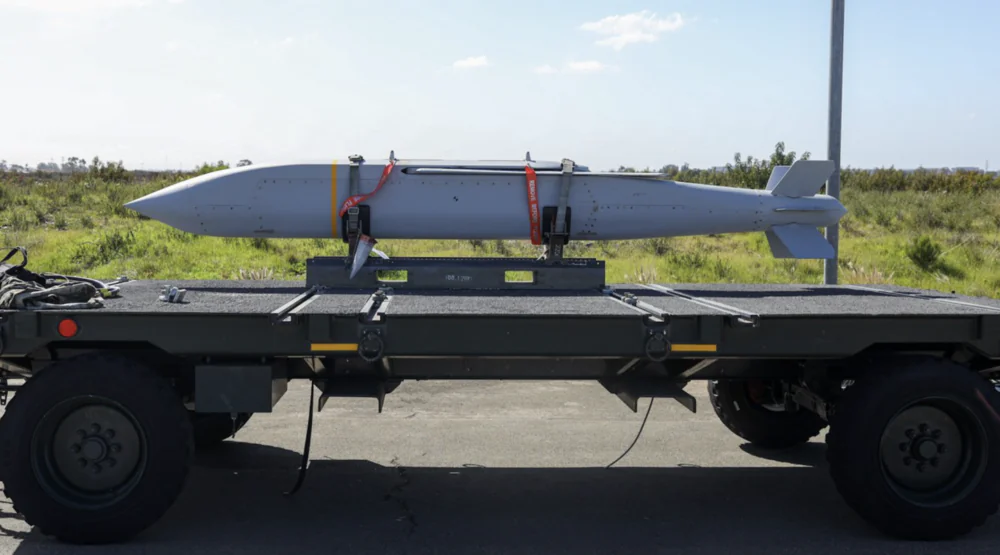
The development program went through various stages—research, design, testing, and refinement. It’s worth noting that the AGM-154 JSOW is a “fire-and-forget” weapon that utilizes a closely integrated combination of GPS navigation, inertial guidance, and infrared homing for precise target acquisition and engagement. These advanced technologies were integrated into the weapon system to ensure reliable performance, maximize mission success rates, and operate effectively both day and night, even in adverse weather conditions. Additionally, the AGM-154 JSOW-C variant includes an infrared device for improved terminal guidance.
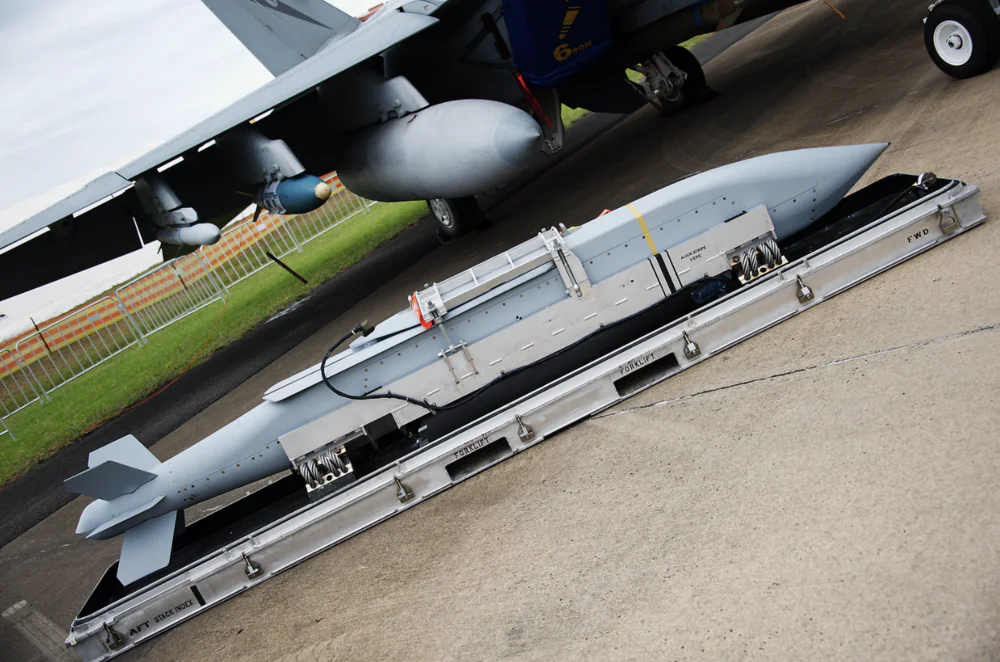
As part of a rigorous development process, the AGM-154 JSOW underwent thorough evaluation and testing by the U.S. military. It was subjected to comprehensive assessments to meet stringent performance requirements and ensure full compatibility with various military aircraft and launch platforms. The operational evaluation (OPEVAL) of the JSOW began with the U.S. Navy in February 1997, and the missile was officially introduced into service in January 1999.
Read also:
- Weapons of Ukrainian Victory: Stridsbåt 90H (CB90) amphibious assault craft
- Weapons of Ukrainian Victory: The 105mm 2-CT Hawkeye Self-Propelled Howitzer
AGM-154 JSOW variants
The JSOW family of glide bombs includes several variants. The AGM-154A is the baseline version, equipped with 145 BLU-97 submunitions. This bomb is capable of targeting aircraft stationed at airfields, trucks, armored vehicles, and surface-to-air missile platforms.
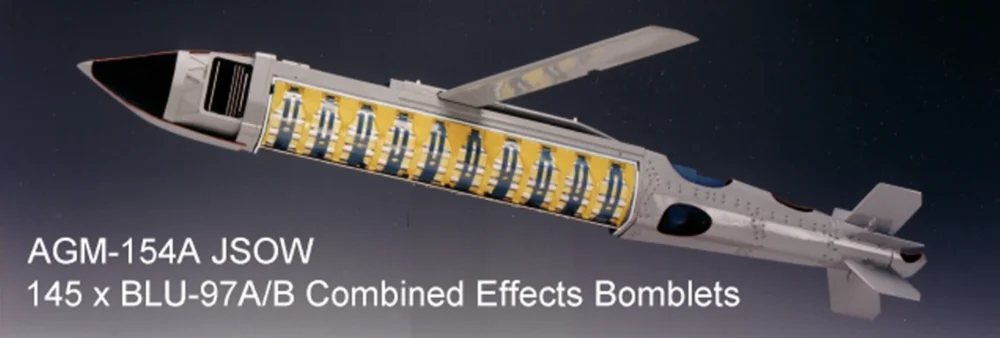
The AGM-154A-1 variant is an enhanced version of the AGM-154A, which features an improved BLU-111 warhead.
The next version, the AGM-154B, is equipped with six BLU-108B/B warheads, capable of launching four anti-tank submunitions at mobile targets.
In the AGM-154C version, a multi-stage Broach warhead weighing 226 kg is used against fixed targets. This missile variant was approved for full-scale production in December 2004 and entered service in February 2005.

The AGM-154 C-1 JSOW is a modified version of the previous JSOW C variant. The U.S. Navy successfully completed the first free-flight test of the AGM-154 C-1 JSOW in August 2011, but this variant was not officially introduced into service until 2016. Experts indicate that this modification includes many new features, which necessitated more extensive study and testing.
Read also: Weapons of Ukrainian Victory: Sonobot 5 surface drones
Aircraft compatibility
The AGM-154 JSOW can be launched from a variety of aircraft used by the U.S. Air Force, Navy, or Marine Corps. This precision-guided bomb can be mounted on platforms such as the F-15E Strike Eagle, F-16 Fighting Falcon, F/A-18, AV-8B Harrier, B-2 Spirit bombers, B-52, and A-10 aircraft.
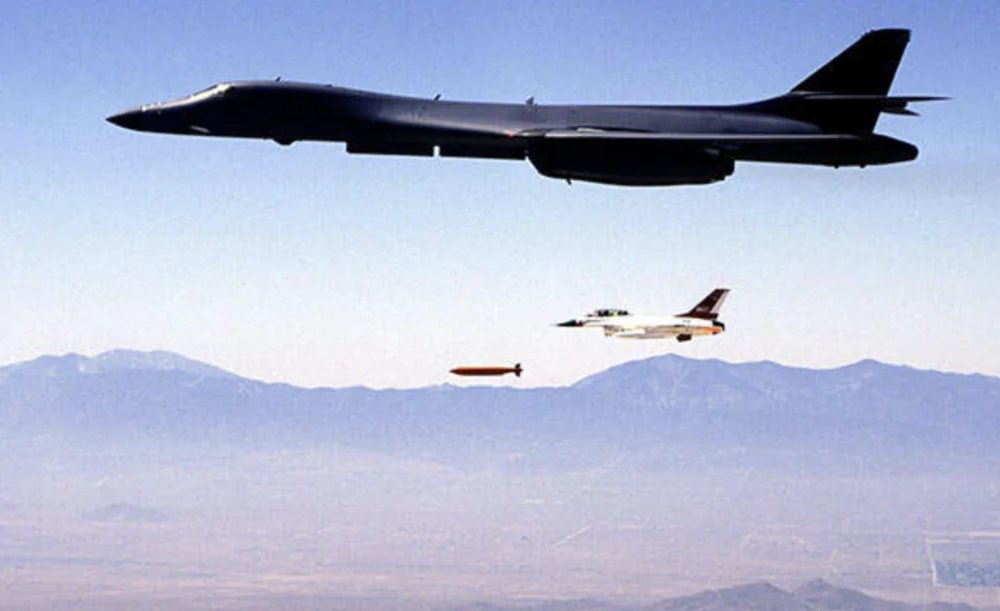
The AGM-154 JSOW can also be integrated with the F-35A Lightning II and the carrier-based F-35C. It can be stored in the internal bay of the F-35, which enhances the aircraft’s stealth capabilities. The aircraft-compatible design of the bomb reduces integration costs with future aircraft platforms, making it a versatile option for various missions.
Read also: Weapons of Ukrainian Victory: Long-range AASM Hammer bombs
AGM-154 JSOW design
The AGM-154 JSOW features a sleek aerodynamic design optimized for launch and flight range. It has an elongated body with foldable wings that deploy after launch, enhancing its range and reducing flight time.
The modular weapon body allows for the integration of new sensors, warheads, and submunitions. Stealth capabilities improve the bomb’s survivability when targeting actively defended objectives. Additionally, the payload bay can accommodate both lethal and non-lethal payloads, providing flexibility for various mission requirements.

The AGM-154 JSOW can be launched both day and night, as well as under adverse weather conditions. Its significant operational range allows for launches from beyond the reach of most enemy air defense systems. The missile can achieve a kinematic range of up to 130 km when launched from an altitude of approximately 12 km, ensuring effective engagement of targets while maintaining the safety of the launching platform.
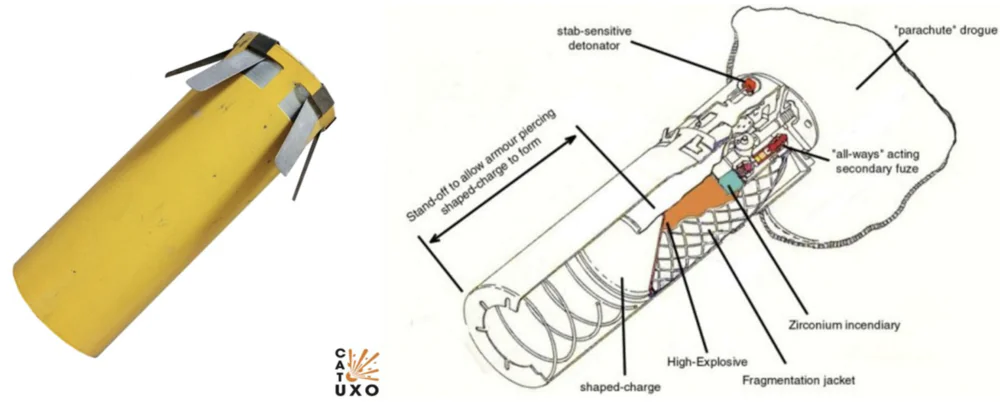
The AGM-154 JSOW has a length of 4.06 meters, a wingspan of 2.69 meters, and a diameter of 33.02 centimeters (in a box shape, side view). The missile weighs approximately 475 kilograms. This design contributes to its aerodynamic efficiency and effective standoff capabilities.
Read also: Weapons of Ukrainian victory: 155 mm Vulcano guided artillery shell
AGM-154 JSOW uses an integrated guidance system that combines Global Positioning System (GPS) technology and Inertial Navigation System (INS) for precise targeting. This dual system allows for high accuracy in hitting both stationary and moving targets. The AGM-154C variant further enhances its targeting capabilities with an infrared terminal guidance device, which improves its effectiveness, particularly against mobile targets or in environments where GPS signals may be compromised. This combination of technologies ensures that the JSOW can perform effectively in various operational scenarios.

The AGM-154 JSOW is designed to be launched from both high and low altitudes, allowing for flexible operational deployment. Once launched, it navigates to its target through selected waypoints, receiving targeting information in a planned mode from the aircraft that launches it. This targeting data can be supplemented by built-in sensors or other third-party targeting systems after the missile has been fired.
The upgraded JSOW C-1 variant includes a two-way data link, known as the Suppression of Enemy Air Defenses (SEAD) Common Weapon Data Link (SCWDL), which enhances its ability to engage moving maritime targets. This feature allows for real-time updates and adjustments to the weapon’s flight path, significantly improving its effectiveness against dynamic targets at sea.
Read also: Weapons of Ukrainian victory: Storm Shadow / SCALP-EG cruise missiles
AGM-154 JSOW version with engine
The JSOW-ER variant of the AGM-154 JSOW is equipped with a powerful Hamilton-Sundstrand TJ-150 engine, which is seamlessly integrated into the rear of the glide bomb. This addition significantly extends the flight range of the AGM-154 JSOW to nearly 560 km, enhancing its operational capabilities.
Tested in 2009, the JSOW-ER was subsequently adopted by the U.S. Air Force in the same year. The engine allows for longer standoff ranges, enabling the weapon to strike targets from a safe distance, thereby minimizing the risk to the launch aircraft.
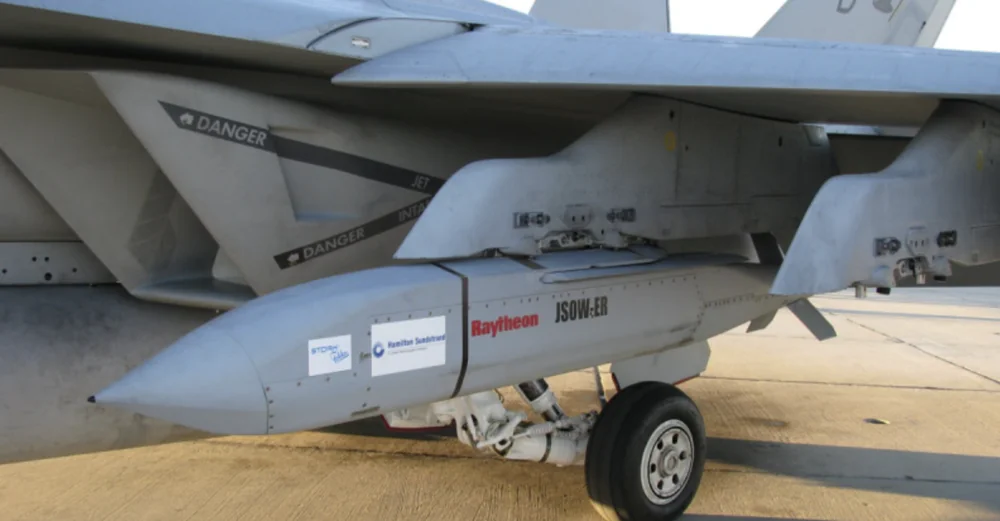
Technical characteristics of AGM-154 JSOW
- Length: 4.06 m
- Diameter: 406-519 mm
- Wingspan: 2,69 м
- Range when launched from low altitudes: 22 km
- Range at launch from high altitude: 130 km
- Range at launch with engine: 560 km
- Maximum bomb weight: 495 kg
- Type of warhead: armor-piercing WDU-42/B with thermobaric filler AFX-757
- Maximum weight of the warhead: 450 kg
- Explosive weight: 108 kg AFX-757
Read also: Weapons of Ukrainian victory: GLSDB ground-launched bomb review
Why AGM-154 JSOW is important for Ukraine
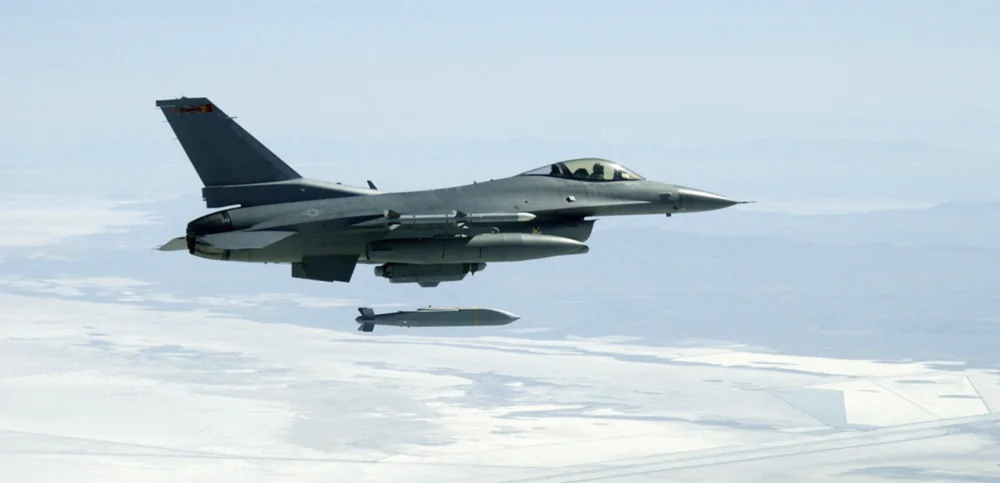
The AGM-154 JSOW is exceptionally well-suited for Ukraine’s unique combat environment. It can autonomously fly to its target from distances exceeding 130 km when launched from high altitude or over 22 km when launched from low altitude. This capability makes the JSOW particularly effective against geolocated static or semi-static air defense systems.
Moreover, the infrared sensor used for terminal guidance is less susceptible to radio frequency jamming, enhancing its operational reliability. The bomb also features a very low signature, which significantly complicates its interception by Russian air defense systems.
These attributes enable the Armed Forces of Ukraine to target enemy assets deep within their territory, potentially destroying critical infrastructure such as air bases, ammunition depots, military vehicles, and even personnel. By leveraging the JSOW’s standoff capability and advanced guidance systems, Ukrainian forces can conduct more effective strikes while minimizing risk to their aircraft.
Now, in the face of fierce fighting with the occupiers, every high-precision projectile, every combat vehicle, every air defense system, every cruise missile or amphibious assault boat is extremely necessary for us, so I would like to sincerely thank our Western friends and partners for their help and support. The invaders will not escape from retribution. Glory to Ukraine! Death to the enemies! Glory to the Armed Forces of Ukraine!
And if you are interested in articles and news about aviation and space technology, we invite you to our new project AERONAUT.media.
Read also:
- Weapons of Ukrainian Victory: Review of the Patriot air defense system
- Weapons of Ukrainian Victory: Stryker armored personnel carrier

